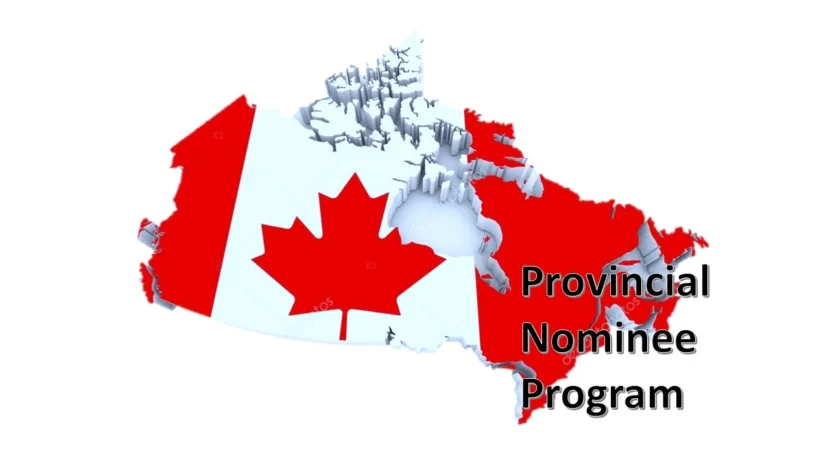IRCC outlines new guidelines for PNP
IRCC outlines new guidelines for PNP
Provinces have a limit on the number of candidates they can invite through the PNP. Each year, the federal government allocates a specific number of nominations to each province and territory.
Through the PNP, provinces can select economic immigrants who stand out as having the skills, connections, or other attributes that a province needs to support its workforce and economy. The provinces and federal government share responsibility for immigration. All Canadian provinces and territories (PTs) have a PNP except for Nunavut, and Quebec, which has a separate agreement with the federal government.
Candidates who receive a provincial nomination can then submit their permanent residence application to IRCC. For example, Express Entry candidates who receive a nomination (called enhanced nomination) can gain an additional 600 points under the Comprehensive Ranking System if they accept the nomination and submit an approved PNP application to the province that invited them. Gaining the additional 600 points virtually guarantees an Invitation to Apply in an Express Entry draw.
Candidates can also apply directly to a provincial government for nomination (called base nomination).
Guiding principles for allocations
When IRCC decides how many nominations a provincial government should be allocated, it typically uses guiding principles. IRCC says the objective of the PNP guiding principles is to:
- Establish a systematic, evidence-based framework to determine PNP allocations year over year;
- Introduce a great operational predictably through allocations that reflect past usage and trends including a more accurate split between based and enhanced spaces; and
- Support more transparency with provinces and territories (PTs) by informing them of the considerations IRCC uses to inform the allocation recommendations to the Minister. This includes working with them on actions to improve predictable usage of allocations (such as introducing limits on the size of reallocation and redistribution requests).
IRCC further breaks down the guiding principles into qualitative and quantitative factors that are meant to improve predictability and, long term, improve processing times for base PNP applications.
The report says by creating more predictability, IRCC will be in a better position to allocate nominations to provinces and reduce the number of requests for changes received from PTs.
The department says that quantitative considerations will reflect the objectives and desired outcomes of regional immigration programming (such as the PNP and the Atlantic Immigration Program). It will show the share of economic immigrants compared to the share of populations, and the retention rates in each PT. This data will help IRCC determine the number of nominations in its allocation.
Once IRCC decides on the size of a provincial allocation increase, qualitative considerations are used to adjust the number. IRCC seeks feedback from PTs and other stakeholders through consultations to better understand their needs and make changes. This includes accounting for other allocations that support a regional need such as the Atlantic Immigration Program (AIP) or the Rural and Northern Immigration Pilot.
Atlantic Immigration Program
The ATIP makes special reference to the AIP. In its first year, the AIP used a population model that was based on each province’s percentage of the overall regional population. IRCC still applies this approach to the first 2,000 allocations.
After those allocations are distributed, IRCC then factors past usage of allocations, provincial immigration growth strategies and the share of economic immigration spaces, such as through Express Entry or the PNP.
Multi-year allocations for PNP
The guidelines are also being used in the recently endorsed multi-year plan for the PNP and the Atlantic Immigration Program.
The new multi-year plan will act much like the Immigration Levels Plan and give PT governments allocations for three years in advance, although allocations can change.
Previously, allocations were assigned only one year at a time which created challenges for the provinces in planning infrastructure such as housing or making sure adequate healthcare is in place, as well as settlement services for newcomers.
At the time it was also announced that the overall number of PNP allocations had been increased by 44% for 2023.
Immigration Levels Plan
A new Immigration Levels Plan for 2024-2026 will be released by November 1st this year. The Plan will outline permanent resident admission targets for the next three years and help shape Canada’s immigration strategy.
In the 2023-2025 Plan, the PNP accounted for the highest planned number of permanent resident admissions with targets starting at 105,500 in 2023 and rising to 117,500 PNP admissions per year in 2025.
Immigration Minister Marc Miller has said that he does not anticipate that targets will decrease in the upcoming plan. Given the already high targets, and pressure from provincial governments to raise the number of allocations, it is likely that any revisions to the existing PNP admissions targets will be an increase.

